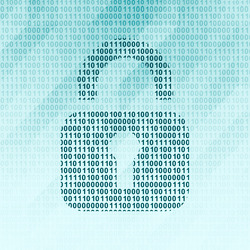Organizations have increasingly become targets of hacking that result in massive data breaches, calling to attention both the increasing importance of proper cybersecurity software, but also an overall change in security strategy.
According to a recent report, the average cost of a data breach globally in 2022 reached a sum of $4.35 million, up from the previous year. In the United States alone, the average cost is as high as $9.44 million – a staggering number, with businesses increasing prices to accommodate for the resulting costs.
While mitigating cyber threats is challenging, having a sound security strategy to tackle threats is key. Among some of the strategies employed is data loss prevention (DLP), which should be a part of any company’s data protection repertoire.
What is data loss prevention, and how does it work?
DLP is designed to prevent accidental or intentional losses of data. The idea basically is to protect confidential data and information to prevent fraudulent access, both within a company and outside it.
Some of the ways DLP works and helps data protection is by classifying types of data into various categories, identifying security violations, and automating certain processes, so that data management becomes easier to handle. Flagging data into categories based on confidentiality or access level is just one-way DLP helps, as access management is important in mitigating potential loss in the form of unwanted leaks, for example.
For DLP to work, it can be done in-house by an internal IT team, but it can also be outsourced, depending on where the priorities of a business lie. With the sheer number of endpoint devices a company usually manages, it makes sense to use outside help to properly secure data on all of them, while letting their IT teams tackle other matters. However, just like any business, DLP companies can also be the targets of attacks.
The various types of DLP
DLP solutions are adaptable, so they can be easily configured to suit any company’s needs. Depending on this, a company can pick from different DLP types, as each one has its own strengths and weaknesses.
For example, endpoint DLP focuses on securing data on all company endpoints. It involves the implementation of user monitoring and other security policies to prevent data loss allowing for visibility into data usage on devices.
However, since data is not only stored or moves only through endpoint devices, there is also network DLP, which takes care of monitoring data in use across an organization’s network. It can easily identify and prevent unauthorized movement of data by leveraging its power to see how various forms of data move on the network, like who accessed what and when, which is very useful when looking for anomalous behavior.
Also worth mentioning is a different subsection of network DLP. While organizations are increasingly moving to adopt cloud services, protecting data stored on them is important. Hence why cloud DLP helps protect data stored by businesses on cloud repositories. Sometimes a business enables access to its cloud storage to partners, for example, in which case cloud DLP is very useful to ward off potential data security failures.
These three previously mentioned types of DLP solutions can also work together to provide comprehensive protection across different stages of data in motion – at rest, at motion, and in use. Implementing all three types can help organizations prevent data loss and maintain a proper data security posture.
Compliance - the added benefit of DLP
A company should have DLP for several reasons, including compliance with regulations, as many industries are subject to strict data protection and privacy regulations, such as the General Data Protection Regulation (GDPR), Health Insurance Portability and Accountability Act (HIPAA), or the Payment Card Industry Data Security Standard (PCI DSS) among others.
Specifically, since GDPR involves stringent measures on respecting user privacy and data, DLP gives the right amount of protection to shield companies from potential issues stemming from data breaches, for example.
ESET and Data Loss Prevention
ESET, as part of its technology alliance, has a trusted partner in Safetica, offering data loss prevention services with Safetica ONE and Safetica NXT, to prevent data leakage, guide staff on data protection, and to stay compliant with regulations.
While ESET protects you by offering award-winning endpoint security and detection and response solutions through the ESET PROTECT Platform, Safetica’s products add another layer of protection, protecting data both inside and outside a company, being tough on insider threats and data loss in an era of hybrid work, during which endpoints and data can move all around the world.
To sum it up, having a well-functioning DLP toolset can help any organization in exercising proper data control. It is an enormously important component of any comprehensive data security strategy in today’s world of ever-evolving threats.
